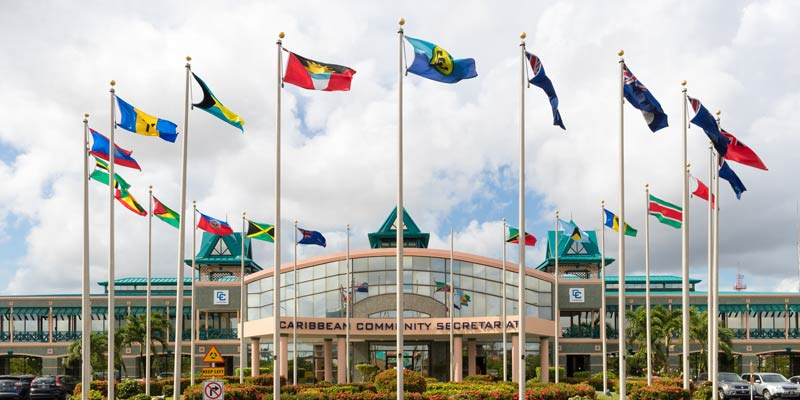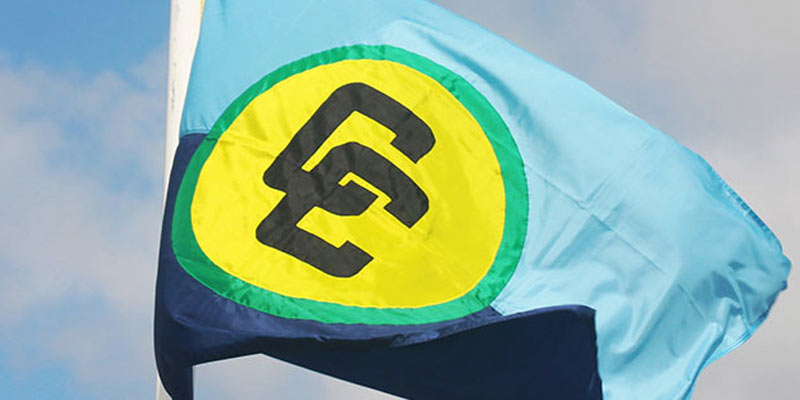- World
- Nov 07
What is CARICOM?
• The second meeting of the India-CARICOM Joint Commission was held in virtual mode on November 6.
• Representatives from CARICOM Secretariat, CARICOM member states and ministries in government of India participated in the virtual meeting.
• The Joint Commission reviewed the entire spectrum of relations between India and CARICOM including economic and commercial, agriculture, health and pharmaceuticals, energy and infrastructure, technology & innovation, human resource & capacity building, culture and people-to-people exchange.
• Both sides deliberated on strengthening economic cooperation, enhancing trade and fostering a robust partnership in the areas of education, digital public infrastructure, development cooperation, renewable energy, science and technology, climate change adaptation, disaster management and resilient infrastructure.
Caribbean Community (CARICOM)
• In 1972, Commonwealth Caribbean leaders at the 7th Heads of Government Conference decided to transform the Caribbean Free Trade Association (CARIFTA) into a Common Market and establish the Caribbean Community, of which the Common Market would be an integral part.
• On July 4, 1973, they signed the Treaty of Chaguaramas in Trinidad & Tobago establishing the Caribbean Community (CARICOM).
• CARICOM comprises 15 Member States and six Associate Members, mostly island states in the Caribbean.
• While these states are all relatively small, both in terms of population and size, there is also great diversity with regards to geography and population as well as the levels of economic and social development.
• It is home to approximately 16 million citizens, and from the main ethnic groups of Indigenous Peoples, Africans, Indians, Europeans, Chinese, Portuguese and Javanese.
• Stretching from The Bahamas in the north to Suriname and Guyana in South America, CARICOM comprises states that are considered developing countries, and except for Belize, in Central America and Guyana and Suriname in South America, all members and associate members are island states.
Members of CARICOM
CARICOM has 15 members:
Antigua and Barbuda, Bahamas, Barbados, Belize, Dominica, Grenada, Guyana, Haiti, Jamaica, Montserrat, St. Kitts and Nevis, St. Lucia, St. Vincent and the Grenadines, Suriname and Trinidad & Tobago.
• Of the 15, all except Montserrat are nation States. Montserrat is a British Overseas Territory in the Caribbean.
• Stretching from the Bahamas in the north to Suriname and Guyana in South America, CARICOM comprises states that are considered developing countries.
• Anguilla, Bermuda, British Virgin Islands, Cayman Islands, Curacao and Turks & Caicos Islands are Associate Members of the Community.
• While these states are all relatively small, both in terms of population and size, there is also great diversity with regards to geography and population as well as the levels of economic and social development.
• Except for Belize, in Central America and Guyana and Suriname in South America, all members and associate members are island states.
• CARICOM is the oldest existing integration movement in the developing world.
• The chairmanship of the Community is rotated every six months among the member countries’ Heads.
• The CARICOM Secretariat in Georgetown, Guyana is the principal administrative organ of the Community.
The objectives of the Community are:
• To improve standards of living and work.
• Full employment of labour and other factors of production.
• Accelerated, coordinated and sustained economic development and convergence.
• Expansion of trade and economic relations with third States.
• Enhanced levels of international competitiveness.
• Organisation for increased production and productivity.
• Achievement of a greater measure of economic leverage.
• Enhanced coordination of Member States’ foreign and foreign economic policies and enhanced functional cooperation.
CARICOM Single Market and Economy
• Between 1993 and 2000, the Inter-Governmental Task Force (IGTF) which was composed of representatives of all Member States, produced nine Protocols, for the purpose of amending the Treaty. These nine Protocols were later combined to create a new version of the Treaty, called formally, ‘The Revised Treaty of Chaguaramas’ heralding the establishment of the CARICOM Single Market and Economy.
• The CARICOM Single Market and Economy is intended to benefit the people of the region by providing more and better opportunities to produce and sell goods and services and to attract investment. It will create one large market among the participating Member States.
India-CARICOM relations
• India’s political engagement with CARICOM as a group started with the visit of a delegation led by K.D. Knight, Minister of Foreign Affairs and Trade of Jamaica and the then chairman of the Community Council, to India in November 2003, during which an agreement was signed for establishing a Standing Joint Commission on Consultation, Cooperation and Coordination.
• Later in February 2005, India was invited as a special guest to the CARICOM Summit in Paramaribo. Subsequently, India-CARICOM Economic Forum was held in August 2005 in Port of Spain led by the then Minister of State for Commerce and Industry.
• On the occasion, a project for computerisation of the CARICOM Secretariat valued at $1.3 million, funded by India, was completed and handed over to the CARICOM Secretariat.
• Upgradation of ICT system of CARICOM Secretariat with government of India grant of $2.4 million was completed thereafter. India has since been extending capacity building and developmental assistance to CARICOM countries in several areas.
• India’s historic and warm relations with the countries of the Caribbean witnessed a new momentum with the meeting of PM Modi with 14 leaders of the CARICOM countries on the UNGA sidelines on September 25, 2019 in New York, during which PM Modi announced $14 million Grant for Community Development Projects (CDP) in the CARICOM (1 million for each country) and another 150 million Line of Credit for projects related to Solar, Renewable Energy and Climate Change.
• India and CARICOM share common positions on many global issues and coordinate closely in multilateral fora.
• The presence of a large Indian diaspora in the region and traditionally close relations of most member countries of CARICOM with India is an important factor.
Manorama Yearbook app is now available on Google Play Store and iOS App Store


